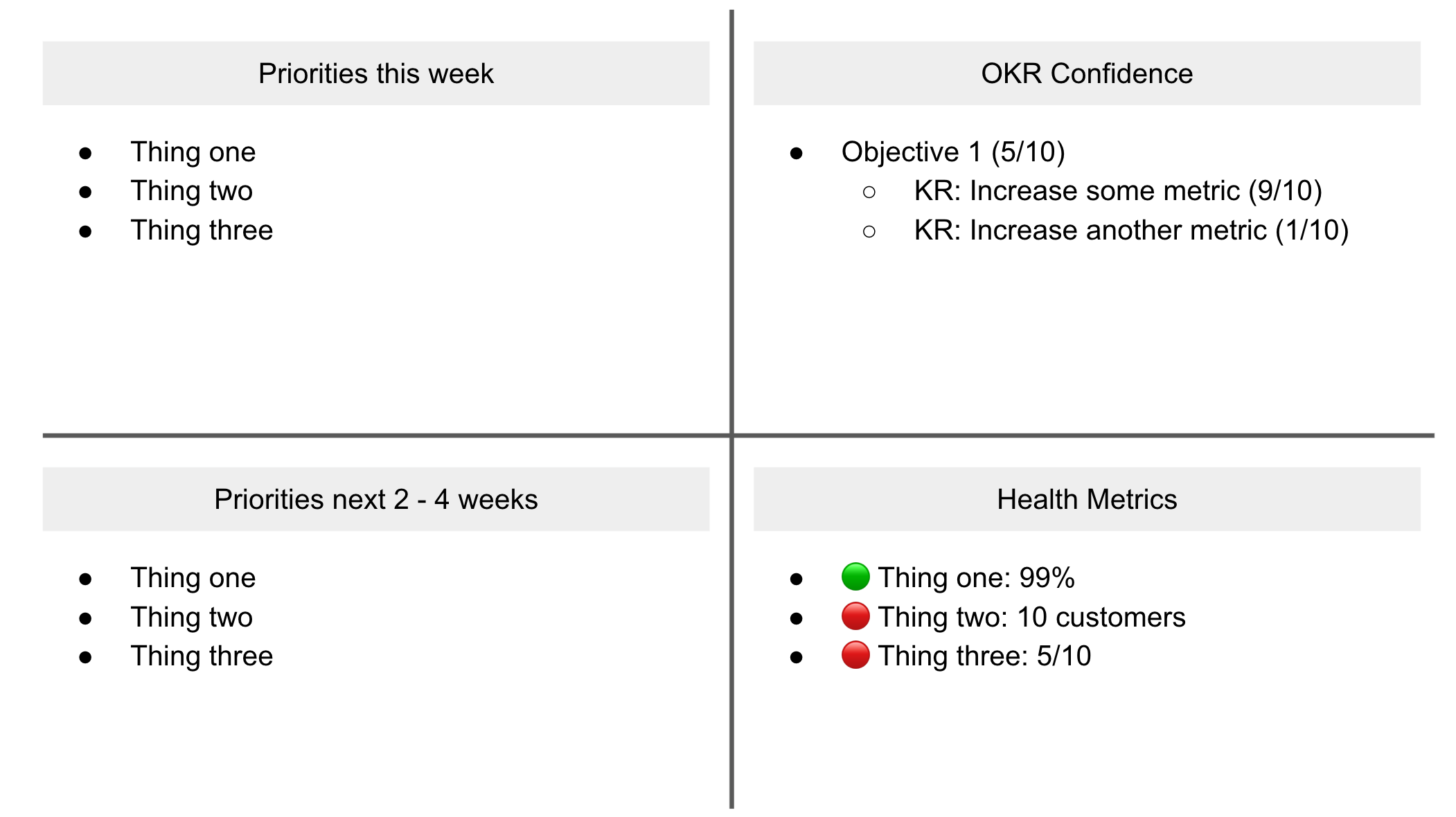
Photo by Timon Studler on Unsplash
The typical corporate goal-setting process usually happens once a quarter, managers scramble to set goals, throw them into an HR system (often last minute, or late) and do not tend to look at them or keep them updated until the end of the quarter. What happens next typically comes down to the discipline of the leader to action it, which is often a personal process rather than a standardized one.
How are you increasing the visibility to the most important objectives across the broader organization? How often are you as a leader, reflecting and checking in on your goals?
There are many solutions out there that allow you to set up your goals (the quarterly scramble), track your goals (in an HR system, a spreadsheet, or shared document), it typically falls on an individual leader to keep these up to date. There is very little help available to help communicate and share the progress towards achieving these goals.
Setting great OKRs takes practice, and early in the transformation towards a more dynamic, outcome-based culture, it’s easy to go off the rails. Some frequent mistakes when planning with OKRs include:
The best leaders are the ones that communicate up, around, and down and share the progress towards goals and outcomes.
You might do this at the moment in status meeting check-ins with other senior leaders in the organization, or as a cross-functional team.
Sharing progress towards a goal allows everyone to see the momentum you’re gaining, becomes a discussion point for identifying challenges and new ideas, as well as celebrating the wins you might be getting along the way.
A team meeting (or the first part of a 1:1) is a great place to get the latest information on how particular initiatives are progressing. The book Radical Focus has a great concise framework on how teams can be presenting back their updates on a weekly basis in a single slide. The format of presenting updates on a single slide is a great forcing factor to ensure you’re not focusing on too much!
Slice a single slide into 4 quadrants

For the best results, you might find that a team meeting focused on objectives and providing an update on each becomes more cross-functional over time.
Download the template here: https://docs.google.com/presentation/d/1HPcSBh-ZbsKJ_wkZ1beRcF45QXeS50BoJjAX9Eb0-4A/edit?usp=sharing
This is probably the most often overlooked tip. Often you’re so wound up in running from meeting to meeting that you forget to keep the broader team informed of what’s happening, or even make time for yourself at the end of the week to decompress and get ahead of the next week.
As a time-poor product leader myself, here’s what I do in the last few minutes on a Friday before beer o’clock:
By following those three key tips you’re avoiding the common pitfalls with OKRs, where you’re linking activities to outcomes, sharing OKRs and the progress towards objectives publicly in meetings, slides, and email updates, and trying to limit the amount of work in progress at any one point in time.
Get started now to send data-driven progress reports to clients and stakeholders.
Send your first update within minutes.